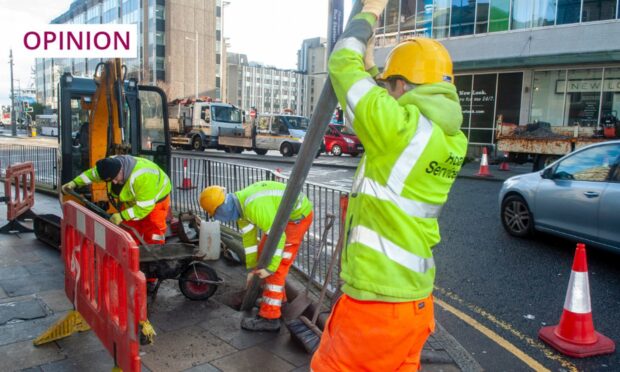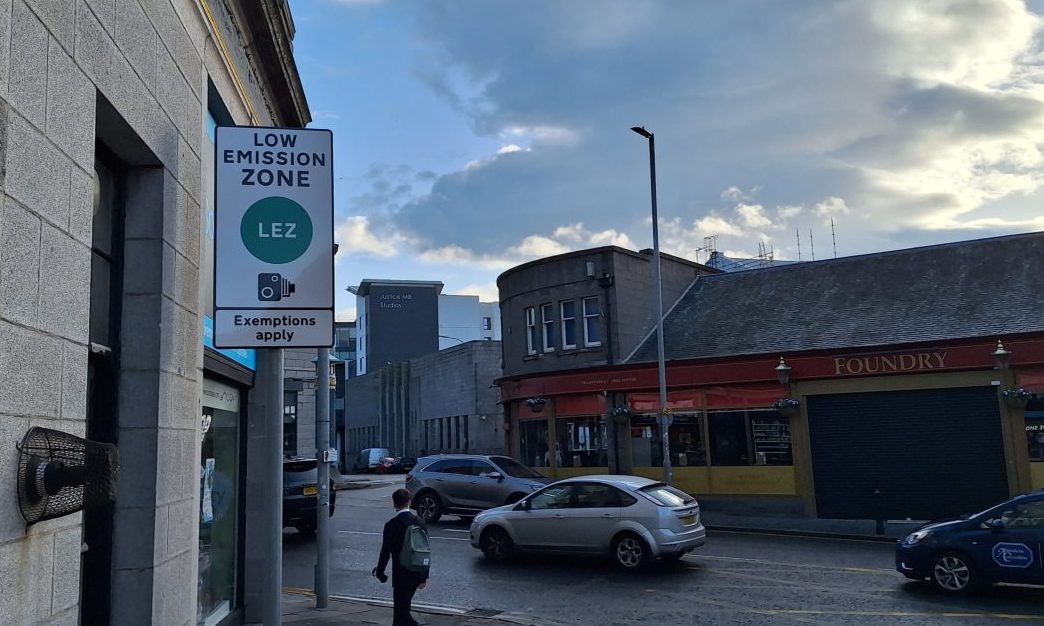There was a time when I wondered if those ghastly bus-gate experiments in Aberdeen might trigger a similar bust-up to what happened with low emission zones in London.
You might recall public disgust over being steamrollered by a controversial new zone in Uxbridge. At a by-election soon afterwards, the electorate enjoyed sweet revenge on those behind the scheme.
These traffic restrictions ban cars and other vehicles from some city centre streets. Camera-controlled bus gates – followed by an avalanche of fines – were pushed through with scant public consultation. Using experimental traffic orders, city council officials side-stepped normal input from residents.
With traffic changes on this seismic and utterly confusing scale, we might reasonably expect far more public involvement in advance. But that would get in the way, wouldn’t it?
Like experiments in famous works of literature – Frankenstein springs to mind – we are all familiar with how easy it is to create a monster. So, it’s not just street protesters who are supposedly undermining democracy. Guardians of our democracy in central and local government are quite capable of doing it, too, if not challenged continuously.
Fines on hapless drivers flowed like a well-oiled tax machine. Now, the council is busy creating a larger low emission zone as well – with a matching set of £60 fines, just like the bus gates (although gate fines are due to rise – surprise, surprise).
Will LEZ and bus gate fines go towards improving the city?
I saw a picture in The P&J which showed a new LEZ sign being readied for launch day in June, when various vehicles will be barred from the zone based on emissions. It will soon join forces with bus gates to create one the most restricted set of streets Aberdeen has ever seen. A different type of “bypass”, in danger of carrying business away from the city rather than into it.
The only discernible benefit put forward by those loosely in charge of delivering future economic success for Aberdeen is that the buses now run on time, after the bus gates barred virtually everything else. Marvellous news, isn’t it? We can all sleep easier at night.
I’d love to know how many millions the council has pocketed from the recent expansion of extra bus gates, in addition to a very lucrative pilot scheme a couple of years ago. Surely the overall total is available, under Freedom of Information laws?
I’d be even more interested in a detailed breakdown of where local government has spent this income to improve the city. I fear it’s lost in some labyrinthian financial black hole.
I do have the unusual distinction of being caught in the original bus gate at one end of Union Street. Not just once, but twice, in a matter of days – and in virtually the same spot. This took a bit of doing.
I thought the gates were a bad idea in the first place; I don’t think I bear a personal grudge.
Confusion over poor signage failing to protect drivers from the gates has been an issue. After I was caught, I actually went back to the scene of my “crime” to check I hadn’t gone mad. I walked at snail’s pace through the gate and still felt crushing confusion.
The signs aren’t good
Lo and behold, the new Aberdeen LEZ is prompting fresh fears of confusion expected to confront drivers when it goes live.
I know this is all about the challenge of reducing congestion and fumes on the city’s worst traffic-clogged roads, but has the council driven a cart and horses over the rights of businesses and customers?
The shaded LEZ section superimposed on council graphics of the city to denote its boundaries resembles something alarming on an X-ray, creeping over the area around Union Street and the Bon Accord shopping centre, which have been dying on their feet. Will the LEZ make things worse?
Meanwhile, shopping rival Union Square sits in glorious isolation outside the zone. And it’s expanding rapidly, after the recent acquisition of a mega M&S investment deal at the Bon Accord’s expense.
I was startled the other day when I drove over a new LEZ sign on the ground in Virginia Street, alongside Aberdeen harbour. I know the signage is not yet complete. Well, I hope not.
More must be on the way to make it clearer, because I wasn’t sure what the sign beneath my wheels meant. Was I entering an LEZ zone or leaving it – or already in the middle of it?
I was distracted by someone cutting me up, so I might have missed bigger signs – that’s the reality of urban driving, which sign-planners ignore.
But, no time to dwell on the LEZ signs – I was rushing towards a bus gate.
I see more confusion and anger growing. The signs aren’t good.
David Knight is the long-serving former deputy editor of The Press and Journal



Conversation